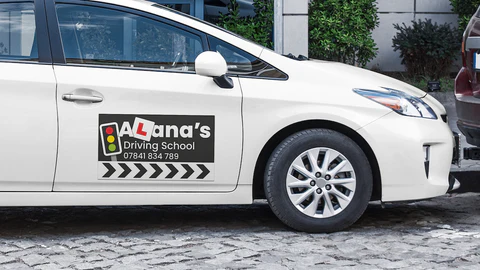Driving is a skill that involves not only understanding how to operate a vehicle but also being aware of the rules of the road, safety measures, and courteous driving habits. Whether you’re a new driver or an experienced one, it’s crucial to continually hone your driving skills and stay informed about best practices. Here are some essential tips every driver should know:
1. Understand the Basics of Your Vehicle
- Know Your Car’s Controls: Familiarize yourself with the car’s dashboard, including indicators, lights, wipers, and emergency functions.
- Regular Maintenance: Ensure your car is regularly serviced. Check oil levels, tire pressure, brake fluid, and coolant regularly.
- Understand Your Tires: Know how to check tire pressure, identify signs of wear, and understand the importance of tire rotation and alignment.
2. Practice Defensive Driving
- Stay Focused: Keep your eyes on the road and avoid distractions such as texting or eating while driving.
- Maintain Safe Distance: Keep a safe distance between you and the car ahead to allow ample stopping time in case of sudden brakes.
- Be Aware of Blind Spots: Adjust your mirrors correctly and always check blind spots before changing lanes or merging.
3. Adhere to Traffic Laws
- Speed Limits: Always adhere to posted speed limits. Remember, speed limits are designed for optimal driving conditions.
- Use Indicators: Always signal before turning or changing lanes to inform other drivers of your intentions.
- Obey Traffic Signs: Stop at stop signs, yield where required, and adhere to traffic signals.
4. Safety First
- Seat Belts: Always wear your seat belt and ensure all passengers are buckled up.
- Child Safety: Use appropriate car seats for children and ensure they are correctly installed.
- Never Drink and Drive: Avoid driving under the influence of alcohol or drugs. Designate a driver if you plan to drink.
5. Drive According to Conditions
- Weather Conditions: Adjust your driving speed and style according to weather conditions such as rain, snow, fog, or ice.
- Night Driving: Use your headlights appropriately and reduce speed. Be extra cautious as visibility is reduced.
- Road Conditions: Be aware of road conditions, including construction zones, gravel roads, and potholes, and adjust your driving accordingly.
6. Handling Emergencies
- Know How to Change a Tire: Learn how to safely change a tire and keep a spare tire, jack, and wrench in your car.
- Emergency Kit: Keep an emergency kit in your car that includes first aid supplies, water, flashlight, and basic tools.
- Know Emergency Numbers: Be aware of local emergency numbers and have roadside assistance contacts handy.
7. Eco-Friendly Driving
- Smooth Acceleration and Braking: Drive smoothly to reduce fuel consumption and emissions.
- Proper Tire Inflation: Maintain correct tire pressure to enhance fuel efficiency.
- Limit Idling: Turn off the engine if you anticipate a long wait to save fuel and reduce emissions.
8. Courtesy on the Road
- Yield and Merge: Be courteous to other drivers. Yield where necessary and merge smoothly without cutting off others.
- Use of Horn: Use the horn sparingly and only to alert other drivers to your presence.
- Parking Considerately: Park within designated spaces and avoid blocking driveways or double parking.
9. Be Prepared for Long Drives
- Plan Your Route: Use GPS or maps to plan your route in advance and have an alternative route in case of unexpected detours.
- Rest Breaks: Take regular breaks during long drives to stay alert and avoid fatigue.
- Stay Hydrated and Energized: Keep water and snacks handy to stay hydrated and maintain energy levels.
10. Technological Assistance
- Navigation Systems: Utilize GPS navigation but don’t rely solely on it. Be aware of your surroundings and have a basic understanding of the route.
- Driver Assistance Features: Make use of modern driver assistance features such as cruise control, lane departure warnings, and automatic emergency braking, but don’t become complacent.
Advanced Driving Techniques
For those looking to further refine their driving skills, consider these advanced techniques:
11. Understanding Vehicle Dynamics
- Weight Transfer: Understand how accelerating, braking, and turning affect your vehicle’s weight distribution and handling.
- Smooth Inputs: Apply smooth steering, braking, and acceleration inputs to maintain control, especially in adverse conditions.
12. Cornering Techniques
- Braking Before Turns: Slow down before entering a turn rather than during the turn to maintain control.
- Apexing: Learn about the apex of a turn (the point where your vehicle is closest to the inside of the curve) to navigate turns efficiently.
13. Emergency Maneuvers
- Threshold Braking: Practice braking at the maximum rate without locking up the wheels for the shortest stopping distance.
- Evasive Steering: Learn how to quickly and safely steer around obstacles without losing control of the vehicle.
14. Driving in Various Terrains
- Gravel Roads: Drive slowly and maintain a firm grip on the steering wheel as traction can be unpredictable.
- Mountain Roads: Be aware of sharp turns and elevation changes. Use lower gears to control speed on downhill stretches.
- Urban Driving: Stay vigilant for pedestrians, cyclists, and other road users. Be prepared for frequent stops and starts.
Tips for New Drivers
If you’re new to driving, it’s especially important to build a solid foundation of safe driving practices:
15. Gradual Exposure
- Start Slow: Begin with short drives in familiar areas. Gradually increase the complexity of your driving routes.
- Supervised Practice: Drive with an experienced driver to provide guidance and reassurance during your early driving experiences.
16. Building Confidence
- Night Driving: Practice driving at night to become comfortable with reduced visibility and headlight glare.
- Parallel Parking: Practice parallel parking in a quiet area before attempting it in busy streets.
17. Handling Peer Pressure
- Stay Focused: Resist the urge to show off or engage in risky behavior, even if pressured by friends or passengers.
- Limit Distractions: Avoid driving with too many passengers initially to maintain focus and minimize distractions.
Continuous Learning and Improvement
Driving is a skill that benefits from continuous learning and improvement. Stay updated with new driving techniques, laws, and technologies to ensure you are always a safe and competent driver:
18. Refresher Courses
- Defensive Driving Courses: Consider taking a defensive driving course to refresh your knowledge and skills.
- Advanced Driving Lessons: For those interested in high-performance or off-road driving, specialized courses can provide valuable training.
19. Stay Informed
- New Laws and Regulations: Keep up with changes in traffic laws and regulations in your area.
- Vehicle Recalls: Stay informed about recalls and service bulletins for your vehicle to ensure it remains safe to drive.
20. Community Involvement
- Share Knowledge: Mentor new drivers or participate in community programs that promote safe driving.
- Advocate for Safety: Support initiatives aimed at improving road safety and infrastructure in your community.
Conclusion
Driving is a responsibility that requires attention, practice, and a commitment to safety. By following these tips and continuously working to improve your driving skills, you can contribute to safer roads for everyone. Remember, driving is not just about reaching your destination but doing so in a manner that ensures the safety and well-being of all road users.








